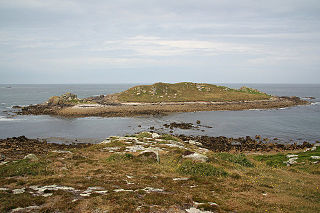
Brook Taylor was an English mathematician best known for creating Taylor's theorem and Taylor's Series which are important for their use in mathematical analysis.

The Thomisidae are a family of spiders, including about 175 genera and over 2,100 species. The common name crab spider is often linked to species in this family, but is also applied loosely to many other families of spiders. Many members of this family are also known as flower spiders or flower crab spiders.

Bifrons is a demon described in the demonological grimoires the Lesser Key of Solomon and the Pseudomonarchia Daemonum, as well as being mentioned in the Dictionnaire Infernal. In these works, he is described as an earl who initially appears as a monster before adopting a more human form. His duties include teaching arts and sciences, including astrology, geometry, and the properties of different plants and stones. He also moves bodies into different graves, lights candles over graves, and commands either 6, 26, or 60 legions of spirits. According to Rudd, Bifrons is opposed by the Shemhamphorasch angel Ariel.

Patrixbourne is a rural English village south-east of Canterbury in Kent, mostly taken up by agricultural hills. Along with almost contiguous Bekesbourne to the north it makes up the civil parish of Bekesbourne-with-Patrixbourne in the City of Canterbury district.

Runcinia is a genus of crab spiders that was first described by Eugène Louis Simon in 1875. The former R. elongata is a synonym of Thomisus elongatus.

Runcinia acuminata is a species of crab spiders.
Asplenium bifrons is a species of fern in the family Aspleniaceae. It is endemic to Ecuador. It is known only from one population in Pichincha Province. Its natural habitat is subtropical or tropical moist montane forests. It is threatened by habitat loss for hydroelectric power.
Heterocoma is a genus of flowering plants in the aster family, Asteraceae.

Runcinia grammica is a species of spiders of the genus Runcinia, with a distribution of "Europa, Near East to Iran, Russia, Central Asia, China, Japan. Introduced to St. Helena, South Africa."

The Norrard (Northern) Rocks are a group of small uninhabited granite rocks in the north–western part of the Isles of Scilly, to the west of Bryher and Samson. In 1971 they were designated as a Site of Special Scientific Interest (SSSI) for their breeding seabird colonies and they are permanently closed to landings from boat passengers. The vegetation on the islands is limited by the extreme exposure and only six species of flowering plants have been recorded.

Hildoceras bifrons is an extinct species of ammonite in the family Hildoceratidae. It dates from about 175 million years ago in the Early Jurassic when it was both widespread and common. Fossils have been found in North Africa and Europe, including several regions of England.
Turbinaria bifrons, commonly known as disc coral, is a species of colonial stony coral in the family Dendrophylliidae. It is native to the Indo-Pacific region. It is a zooxanthellate coral that houses symbiont dinoflagellates in its tissues. This is an uncommon species and the International Union for Conservation of Nature has rated its conservation status as being "vulnerable".
Grass crab spider may refer to:

Rubus bifrons, the European blackberry or Himalayan blackberry, is a European species of flowering plant in the rose family. It is widespread across much of Europe and naturalized in scattered parts of North America. It is sometimes considered to include the species R. armeniacus.
Grass spider may refer to:
Janula is a genus of comb-footed spiders that was first described by Embrik Strand in 1932. It is a senior synonym of Monetoculus.

Dismodicus is a genus of dwarf spiders that was first described by Eugène Louis Simon in 1884.
Ansiea is a genus of crab spiders that was first described by Pekka T. Lehtinen in 2004. As of June 2020 it contains two species found in Africa and Saudi Arabia: A. buettikeri and A. tuckeri.

Pitcairnia bifrons is a species of bromeliad found in Guadeloupe.










